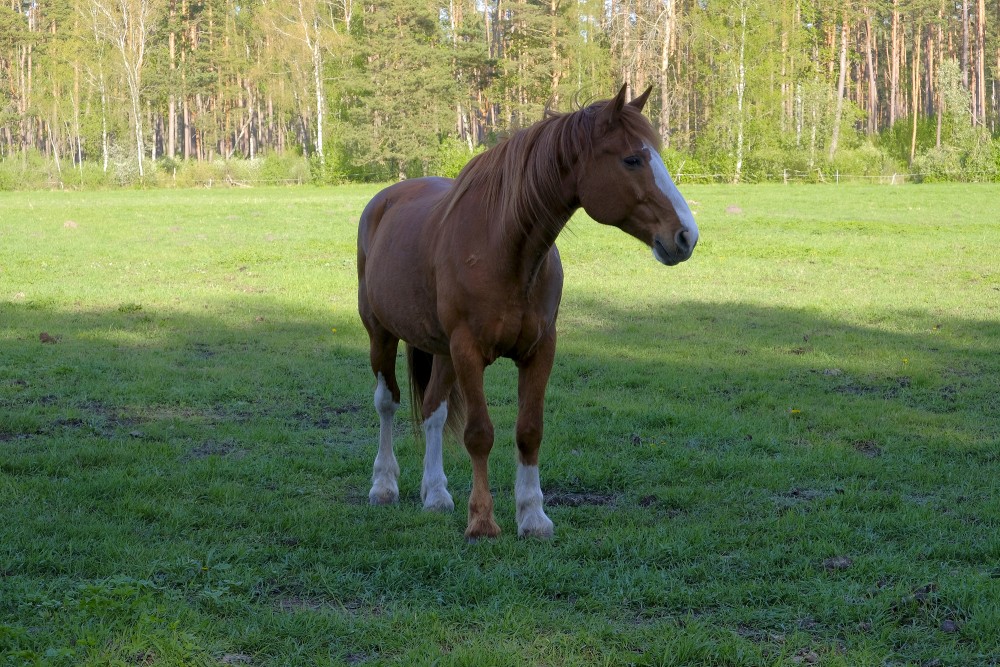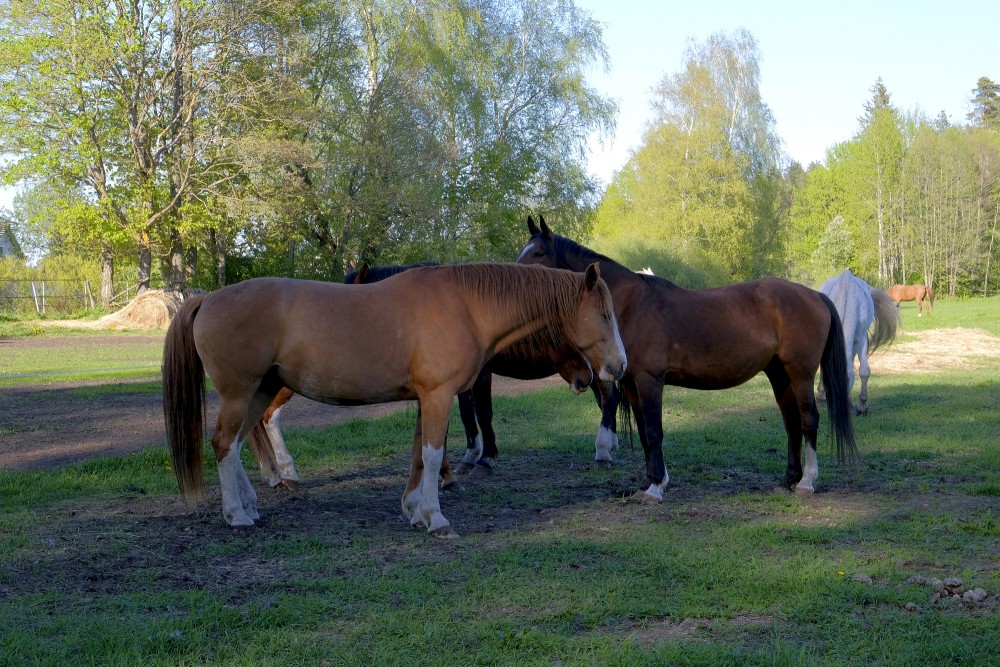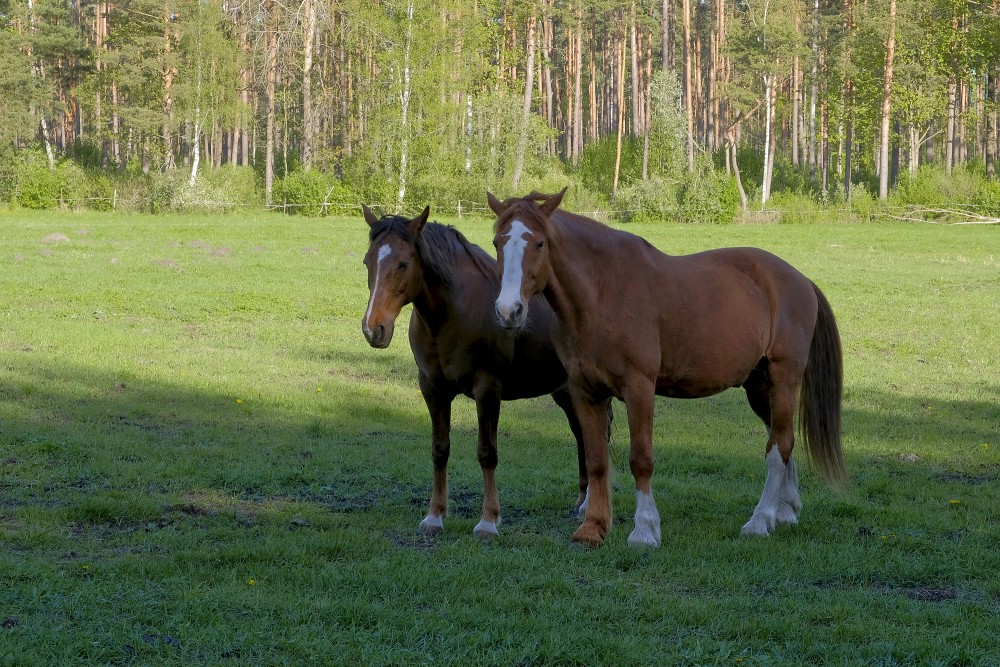Horse (Equus caballus)
The horse (Equus ferus caballus) is one of two extant subspecies of Equus ferus. It is an odd-toed ungulate mammal belonging to the taxonomic family Equidae. Humans began to domesticate horses around 4000 BC, and their domestication is believed to have been widespread by 3000 BC. Horses in the subspecies caballus are domesticated, although some domesticated populations live in the wild as feral horses. These feral populations are not true wild horses, as this term is used to describe horses that have never been domesticated, such as the endangered Przewalski's horse, a separate subspecies, and the only remaining true wild horse. There is an extensive, specialized vocabulary used to describe equine-related concepts, covering everything from anatomy to life stages, size, colors, markings, breeds, locomotion, and behavior.
Horses' anatomy enables them to make use of speed to escape predators and they have a well-developed sense of balance and a strong fight-or-flight response. Related to this need to flee from predators in the wild is an unusual trait: horses are able to sleep both standing up and lying down, with younger horses tending to sleep significantly more than adults. Female horses, called mares, carry their young for approximately 11 months, and a young horse, called a foal, can stand and run shortly following birth. Most domesticated horses begin training under saddle or in harness between the ages of two and four. They reach full adult development by age five, and have an average lifespan of between 25 and 30 years.
Horse breeds are loosely divided into three categories based on general temperament: spirited "hot bloods" with speed and endurance; "cold bloods", such as draft horses and some ponies, suitable for slow, heavy work; and "warmbloods", developed from crosses between hot bloods and cold bloods, often focusing on creating breeds for specific riding purposes, particularly in Europe. There are more than 300 breeds of horse in the world today, developed for many different uses.
Horses and humans interact in a wide variety of sport competitions and non-competitive recreational pursuits, as well as in working activities such as police work, agriculture, entertainment, and therapy. Horses were historically used in warfare, from which a wide variety of riding and driving techniques developed, using many different styles of equipment and methods of control. Many products are derived from horses, including meat, milk, hide, hair, bone, and pharmaceuticals extracted from the urine of pregnant mares. Humans provide domesticated horses with food, water and shelter, as well as attention from specialists such as veterinarians and farriers.
Biology
Size and measurement
The height of horses is usually measured at the highest point of the withers, where the neck meets the back. This point is used because it is a stable point of the anatomy, unlike the head or neck, which move up and down in relation to the body of the horse.
In English-speaking countries, the height of horses is often stated in units of hands and inches: one hand is equal to 4 inches (101.6 mm). The height is expressed as the number of full hands, followed by a point, then the number of additional inches, and ending with the abbreviation "h" or "hh" (for "hands high"). Thus, a horse described as "15.2 h" is 15 hands plus 2 inches, for a total of 62 inches (157.5 cm) in height.
The size of horses varies by breed, but also is influenced by nutrition. Light riding horses usually range in height from 14 to 16 hands (56 to 64 inches, 142 to 163 cm) and can weigh from 380 to 550 kilograms (840 to 1,210 lb). Larger riding horses usually start at about 15.2 hands (62 inches, 157 cm) and often are as tall as 17 hands (68 inches, 173 cm), weighing from 500 to 600 kilograms (1,100 to 1,320 lb). Heavy or draft horses are usually at least 16 hands (64 inches, 163 cm) high and can be as tall as 18 hands (72 inches, 183 cm) high. They can weigh from about 700 to 1,000 kilograms (1,540 to 2,200 lb).
The largest horse in recorded history was probably a Shire horse named Mammoth, who was born in 1848. He stood 21.2 1⁄4 hands (86.25 inches, 219 cm) high and his peak weight was estimated at 1,524 kilograms (3,360 lb). The current record holder for the world's smallest horse is Thumbelina, a fully mature miniature horse affected by dwarfism. She is 17 in (43 cm) tall and weighs 57 lb (26 kg).
en,wikipedia.org
https://en.wikipedia.org/wiki/Horse
Continue reading














































